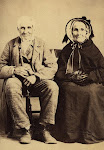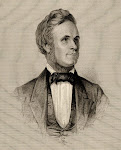For two years the family lived in the small town of about 350 citizens who divided themselves into 69 houses. Five and on-half miles north and east of the growing industrial center of Basingstoke, the litte town was noting more than a stopping place for a family that moved considerably over their lifetime around the little towns in the area. When William was two years old, his parents, Ann Neville and William Stiff married on September 21, 1805, in Rotherwick, another village a mile east of Hartley-Westpall. As was the case with most working class British citizens of the era, neither could sign his name to the register. A William Stiff and Ann Stiff are on the taxation rolls of Rotherwick as renters. By 1816 William Stiff Senior was proprietor and owned his own house. Since most of the property in these towns was held by very few citizens, William Stiff Junior’s claim to be of a family of means may have been true. In addition, Ann’s Neville family may also have been wealthy.
Rotherwick became the family home for over forty years until 1848. William Junior worked at farming for a number of years. However, the world around them was changing rapidly. By the 1830’s the railroad was beginning to come to the cities of Hampshire from London which was about 50 miles to the east. Suddenly there was an expansion of industry. Iron works were being opened and farm machinery was being re-invented, factories were suddenly opening with advertisements for qualified men who understood modern machinery. It was an exhilarating environment in which to live, and it was to change their lives forever.
At the age of 23, William Junior went on September 27, 1826, to the nearby village of Hartley-Westpall, the town of his own birth, to marry his 17 year old sweetheart, Rachel Jennings. From this marriage we learn something. William who may not have been able to wire, signed an X by the name of William Neville of Rotherwick. Rachel also signed with an X. Although he knew his father and called himself William Stiff, the townspeople in the village where he was born had never forgotten his unfortunate birth. Whether or not he knew the name of the register was Neville, we will never know. However, at least he came back with style. Most couples were married by Banns, the poor-man’s way of announcing the marriage three successive weeks in the church to allow anyone contesting the marriage to speak up. William was married by license, thus eliminating the delay as well as the public display. Since the license was too costly for most couples, the family obviously wasn’t in poverty. Perhaps the parents paid for the license. The Neville’s were prominent enough that they would have encouraged a license.









No comments:
Post a Comment